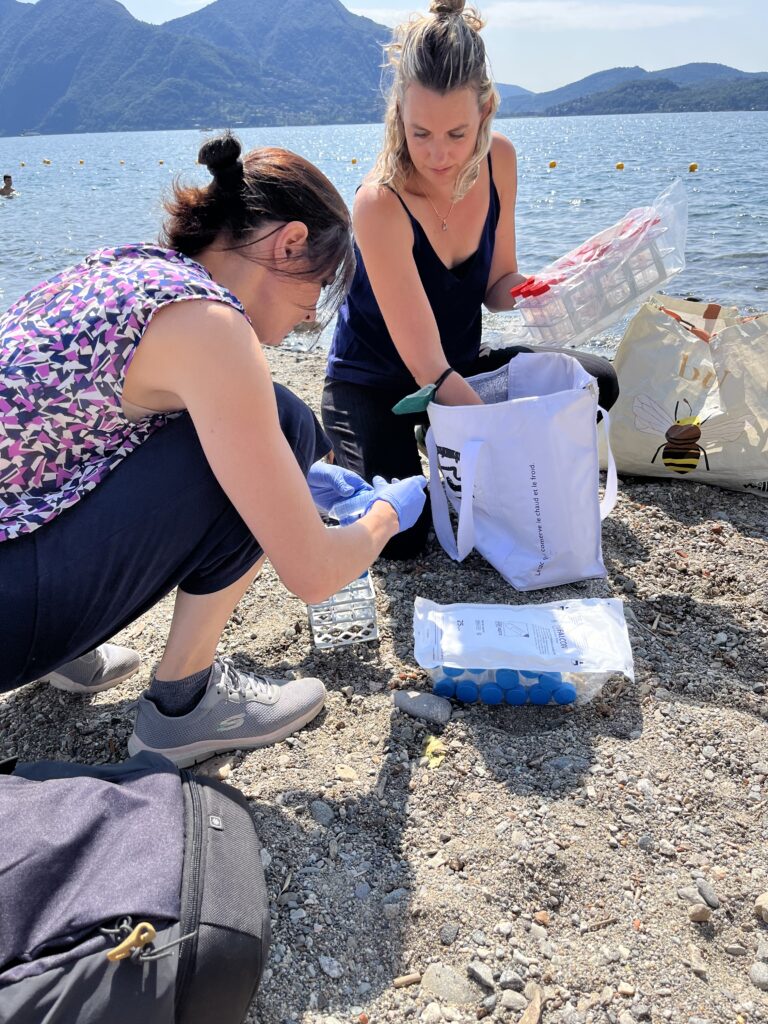The PRIN IdeARG project: what is?
The PRIN IdeARG (Research Projects of National Relevance) project starts from a clear premise: to investigate the causes of antibiotic resistance. Indeed, according to WHO, about 700,000 deaths per year are linked to the phenomenon of antibiotic resistance. The project, however, aims not only to examine the negative effects resulting from the phenomenon, but to go to the origin by trying to understand the reservoirs and how it spreads.
The project is supported by Ester Eckert, researcher at the Institute of Water Research in Verbania (IRSA – CNR), Professor Elena Sara Crotti of the University of Milan, and researcher Angelina Cordone of the University of Naples Federico II.

Credits: Luigi Gallucci; Elena Panariello
Project questions
The project is based on the hypothesis that freshwater sediments are a reservoir of ARGs (antibiotic resistance genes). In fact, they are both normally present in nature and in the genome of bacteria, and persist due to anthropogenic activity.
IdeARG, therefore, aims to shed light on the ecology and evolution of ARGs and the ways in which they spread and persist in environments.
To do this, it starts with some questions that can be divided into 5 macro-categories:
- Distribution: What fraction of DNA contains which ARGs with what frequency?
- Identity: Which freshwater bacteria contain ARGs?
- Mechanism: What is the most likely pathway of ARGs when they enter the system?
- Suitability: What factors promote the maintenance of ARGs in lake sediments?
- Evolution: What is the kinship between environmental ARGs? Are they precursors or descendants of clinically relevant ARGs?
The workflow and effects of the project
A multidisciplinary approach combining microbiological, genetic and bioinformatics knowledge and techniques will be used to answer the above questions.
So, after taking some samples from the shores of Lake Maggiore (taken from three different sites that had different characteristics), sequencing will allow researchers to understand which genera of bacteria are most abundant but also to estimate the frequency of ARGs in genomes. It will also be possible to make genetic hypotheses about the transfer of said genes and their co-evolution.

Data dissemination and outreach to the general public
The project has the major goal of making all data and results of experiments available; to do this, sequencing data will be made available in public archives, microbial strains will be deposited and thus usable by other interested research groups, and results will be disseminated to the scientific community through publication in peer-review journals. Results will also be presented at national and international conferences.
An international course for doctoral students for training in metagenomic data assembly and antibiotic resistance gene analysis will be organized with the support of MicrobEco.
However, the project also targets the general public with the goal of informing about the causes and effects of antibiotic resistance through a single-system view, focusing on evaluating individual ecosystems as part of one large compartment.
To do this, meeting days between scientists and schools and participation in festivals and science outreach events are planned.
A collaborative campaign will also be promoted with the “Federazione italiana medici di medicina generale” or “Ordine del Medici e degli Odontoiatri” in order to disseminate brochures, posters or infographics to the public and on their web pages.
Nonetheless, through the use of social networks, easy-to-understand content will be disseminated in order to raise awareness of the key issues of IdeARG among all age groups, regardless of each individual’s knowledge background.
Thus, the IdeARG project aims to bridge the knowledge gaps that currently exist but also aims to inform, intrigue and raise awareness while always reminding us that antibiotic resistance is a topic that concerns everyone.
Science communicator. I deal with outreach and dissemination for research projects. My skills range from social media management to organising festivals and events.
My degree in biology has led me to focus on communicating microbial ecology for MicrobEco.
I am passionate about graphics, design and data visualisation.